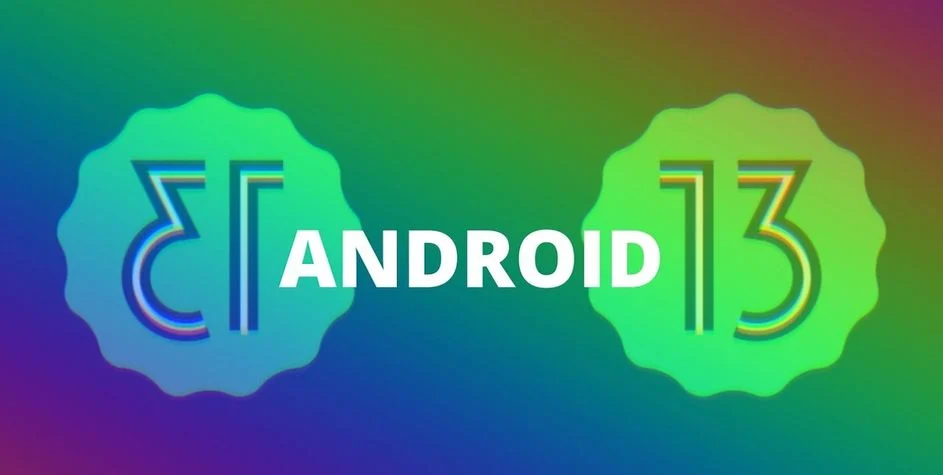Android 13 Features – A Quick Sneak Peek

Here are some of the new features coming to Android 13. Read on to learn more about battery-saving measures, new Do not disturb mode, Bluetooth LE audio support, and much more. Ultimately, you’ll be able to choose which features you want to see on your device. You can expect to see the full update on your Nexus 5 or other Nexus device sometime in the future. But what do you have to look forward to in the coming weeks?
Battery-saving measures
The new update to Android includes multiple measures that will limit the amount of power that an app consumes in the background. These include system apps, persistent apps, and VPNs, among others. These can all eat up a significant portion of the battery life, and Android 13 will help prevent this by sending users a warning if an app consumes too much power in the background. This should be a welcome addition for those who regularly use their phones for gaming and other similar purposes.
Moreover, a number of new features and functions will help your smartphone run longer on a single charge. For instance, you can disable background applications and notifications. Android will also show you the number of apps that use up battery power. You can also set your device to show a warning if any app is using more than 30% of the battery. Battery-saving measures in Android 13 can help you avoid this problem by preserving your battery life.
In addition to battery-saving measures, Android 13 will also give users a notification to let them know which apps are consuming too much energy and aren’t needed. These notifications aren’t as irritating anymore. They will also help in detecting battery drains in the background. And with this new update, Google is giving developers a chance to optimize their apps to run as long as possible. So, developers can finally enjoy their smartphones.
In addition to these, you can also enable super-deep Doze mode to extend the battery life of your Android phone. This feature will only be enabled if your screen is off and your phone is stationary on a table. It is particularly effective when it comes to preserving battery life. Likewise, super-deep Doze mode will automatically turn off certain apps that take up a large portion of your device’s battery.
If you want to turn off the battery-saving measures in Android 13, you can do so manually. You can access this feature by going to Settings > Battery and then selecting “Automatically detect unused apps” or “Automatically detect background processes” to prevent the use of excessive battery power. Once you have turned off these battery-saving measures, Android will try to stretch the battery, while still allowing you to perform daily activities.
Changes to sharing and playing media
One feature that could be making its way into Android 13 is a new feature called “Media TTT”. It will let you transfer media control from one device to another using proximity-based connectivity. This may be achieved through NFC or Bluetooth. The feature is also dubbed “Tap to Transfer” (TTT) and will make sharing files even more convenient. Android 13 has yet to be officially announced, but there are several new features in the works.
As with any Android update, the changelog for Android 13 is not yet fully public, so it’s hard to predict which new features will be made available when the release date comes. However, it’s possible that the new version will include foreshadowings of future products such as Nest Hub. The USB API has been changed, as well as code for a communal “hub mode” where multiple people can use the same app without requiring permission from the owner.
Android 13 includes improvements for non-Latin languages. The system will no longer need to store non-Latin script data on the device, and a new method of handling it will ensure better legibility. For example, text wrapping in Japanese apps will make the characters more coherent, while improved line heights will prevent them from being cut off. These improvements are essential for a truly multi-language experience.
In addition to the new photo picker, Android 13 will also introduce a new Photo API. This new photo API will make it easier for apps to select local and cloud photos and videos. This feature will be pushed to all Android 11 and Android 12 devices, but will be unavailable for phones with the Android Go operating system. However, Android 12 has a new permission requirement for granting access to location data. The NEARBY_WIFI_DEVICES runtime permission will allow Android 13 apps to access these services without requiring location permission.
The new update also includes improvements for storing media files. Previously, Android users had to ‘unlock’ their devices using a special app. Now, they can easily share their photos and videos with others. Another notable change in Android 13 is the introduction of a new notification feature called ‘One Hand Mode’. During an event, this feature will be accessible by one hand. If the changes go through smoothly, the device will not need to be updated.
Do not disturb mode
The new Developer Preview for Android comes with a new feature that will allow you to turn off the “Do Not Disturb” option on your lockscreen. Currently known as Priority mode, this mode has been renamed to Do Not Disturb. You can enable the feature by swiping down from the notification shade or pressing the volume buttons. While this new feature is largely cosmetic, it brings a few minor improvements. Most notably, you can easily silence notifications.
The do not disturb mode can also help you focus on important meetings. By allowing your phone to ignore incoming calls, you can be more present in important meetings and enjoy quality time with your family. The only exceptions are emergencies and urgent calls. If you’re attending a one-off meeting, you’ll likely receive no incoming calls. However, this setting won’t work for everyone. If you’re going to be away for an extended period of time, you can set the duration of the Do Not Disturb feature.
You can also exclude specific callers from Do Not Disturb mode. These are people who call you more than twice within 15 minutes. This way, you can still be reached in case of an emergency. Furthermore, you can block calendar events, reminders, and alarms from ringing. So, you can have a peaceful time in the middle of the day without waking up your phone’s notifications. It is worth noting that a majority of Android devices already come with this option.
The Developer Preview for Android 13 has several improvements aimed at developers. The new version also includes a new Media Player shortcut in the notification bar. You can control your sound box using a dedicated button. Also, you can turn off access to your camera, microphone, and location service. The new Developer Preview for Android 13 provides the ability to downgrade some of the permissions for apps that need access to your location. This is great news for privacy, as you can restrict access to the camera, microphone, and location service.
One great feature of Do Not Disturb on Android 13 is that you can set a certain time frame for it. This way, you can be protected from unwanted calls, texts, or emails during your sleep. You can set a specific time frame for the Do Not Disturb feature to start automatically when you wake up, or turn it off when you’re already in your bed. You can even program it to turn on during your workday or while on your lunch break.
Bluetooth LE audio support
Google has merged commits that add LC3 codec support to Bluetooth LE. This new codec promises to deliver higher quality audio at low data rates. When Android 13 is released, we should see LC3 support. That’s good news for those who use Bluetooth headphones or earphones. However, it’s not clear if the new codec will be included in the release.
One major feature of Bluetooth LE audio is the ability to broadcast audio to multiple devices. This allows for longer battery life and more stable connections. This new technology also supports multiple streams to headphones, making wireless calling and audio streaming possible. With this new feature, hearing aids will be able to integrate with Bluetooth devices. It is unclear how soon this support will be added to Android, but Google commits show that it is on its way.
Another major feature of Android 12 is its Material You design and new notifications shade. It also introduces the Bluetooth Low Energy Audio API. Although Android 12 doesn’t yet support Bluetooth Low Energy Audio, Android Open Source Project has commits that suggest that this feature will be available in Android 13. If it does, we should look forward to the next generation of smartphones and tablets. So, what can we expect from Android 13?
Another feature that could make Bluetooth LE audio supported on Android devices easier to use is the fusion of the LE audio codec. Until now, only high-end smartphones have ported this feature. In the near future, it will likely only be available on the most expensive devices, so it might be a little while before the feature makes its way to cheaper devices. And that’s fine. In the meantime, we should be able to enjoy Bluetooth LE audio in the comfort of our homes.






